As a caregiver, your child’s health and well-being are your top priorities. Navigating the complexities of medical conditions like chondrodysplasia can be challenging and overwhelming. This comprehensive guide aims to equip you with essential knowledge about chondrodysplasia—from its causes and diagnosis to treatment options and available support systems. Empower yourself with the information needed to ensure your child’s wellness every step of the way.
🌟 Understanding Chondrodysplasia: What Every Caregiver Should Know
Chondrodysplasia encompasses a group of genetic disorders that affect the development of bone and cartilage, leading to skeletal abnormalities and short stature. These conditions can vary widely in their severity and the specific bones they impact. Understanding chondrodysplasia, its genetic basis, symptoms, and management strategies is crucial for providing effective care and support for your child.
🦴 What Exactly is Chondrodysplasia?
Chondrodysplasia is a term derived from “chondro,” meaning cartilage, and “dysplasia,” meaning abnormal development. It refers to a range of genetic disorders that disrupt the normal growth and development of bone and cartilage. These conditions typically manifest as short stature, disproportionate limb lengths, joint abnormalities, and other skeletal deformities. Chondrodysplasia can affect various parts of the body, including the limbs, spine, and skull.
Imagine your child’s skeleton as the framework of a house. In chondrodysplasia, some parts of this framework may be shorter or shaped differently, affecting the overall structure and function. While most forms are non-life-threatening, they can significantly impact your child’s mobility, comfort, and daily activities.
📊 Understanding the Types of Chondrodysplasia
Chondrodysplasia is not a single disorder but a collection of related conditions, each with its own set of characteristics and genetic causes. Some of the most common types include:
- Achondroplasia: The most prevalent form, characterized by short stature, particularly in the limbs, and a larger head size. It results from mutations in the FGFR3 gene.
- Hypochondrodysplasia: A milder variant of achondroplasia with less pronounced skeletal abnormalities.
- Diastrophic Dysplasia: Involves joint deformities, short stature, and limb shortening. It is caused by mutations in the SLC26A2 gene.
- Stickler Syndrome: Features include short stature, joint hypermobility, facial abnormalities, and eye problems. It is linked to mutations in the COL2A1 gene.
- Blomstrand Chondrodysplasia: A severe, often lethal form characterized by accelerated bone maturation and high bone density, caused by mutations in the PTHR1 gene.
Understanding the specific type of chondrodysplasia your child has is crucial, as it influences the management and treatment approach.
🔬 What Causes Chondrodysplasia?
Chondrodysplasia is primarily caused by genetic mutations that affect the development and maintenance of cartilage and bone. These mutations can be inherited from one or both parents or occur spontaneously. Here’s a closer look at the genetic underpinnings:
🧬 Genetic Mutations and Inheritance Patterns
- Autosomal Dominant: Only one copy of the mutated gene is needed for the condition to manifest. For example, achondroplasia is typically inherited in an autosomal dominant manner, meaning a child has a 50% chance of inheriting the condition if one parent carries the mutated gene.
- Autosomal Recessive: Both copies of the gene (one from each parent) must be mutated for the condition to appear. Diastrophic dysplasia follows this pattern, where parents are usually carriers without showing symptoms themselves.
- X-Linked Recessive: The mutated gene is located on the X chromosome. Males are more frequently affected as they have only one X chromosome, while females may be carriers. Although not as common in chondrodysplasia, certain related conditions fall under this category.
🔍 Key Genes Involved
- FGFR3 (Fibroblast Growth Factor Receptor 3): Mutations in FGFR3 are responsible for achondroplasia and hypochondrodysplasia. This gene plays a crucial role in bone growth and development.
- SLC26A2 (Solute Carrier Family 26 Member 2): Mutations here cause diastrophic dysplasia, affecting cartilage and bone formation.
- COL2A1 (Collagen Type II Alpha 1 Chain): Linked to Stickler syndrome, this gene is vital for the production of type II collagen, a key component of cartilage.
- PEX7 (Peroxin 7): Associated with Blomstrand chondrodysplasia, mutations in PEX7 disrupt normal bone development.
Understanding these genetic factors can help in diagnosing the specific type of chondrodysplasia and planning appropriate interventions.
⚠️ Recognizing Risk Factors
While chondrodysplasia is a genetic condition and primarily determined by inherited mutations, certain factors can influence its manifestation:
- Family History: A family history of skeletal abnormalities increases the likelihood of chondrodysplasia in offspring.
- Spontaneous Mutations: Many cases, especially in achondroplasia, result from new mutations without any prior family history.
- Associated Syndromes: Conditions like Neurofibromatosis type 2 (NF2), Gorlin syndrome, and Cowden syndrome can elevate the risk of developing specific types of chondrodysplasia.
Being aware of these risk factors allows for early monitoring and intervention, enhancing your child’s quality of life.
📋 Identifying Symptoms Early
Early detection of chondrodysplasia is essential for timely intervention and management. Recognizing the signs can help you seek medical advice promptly, ensuring that your child receives the necessary support.
🧒 Common Symptoms
- Short Stature: Noticeably shorter limbs compared to the trunk, leading to disproportionate body proportions.
- Joint Abnormalities: Hyperflexible or stiff joints, which can lead to pain and limited mobility.
- Facial Features: Enlarged head size, prominent forehead, flat nasal bridge, and underdeveloped midface.
- Spinal Deformities: Curvature of the spine (scoliosis or kyphosis) can develop, affecting posture and mobility.
- Bone Deformities: Bowing of the legs, clubfoot, or other limb deformities may be present.
- Eye and Ear Issues: Problems like myopia, cataracts, hearing loss, or structural abnormalities in the ears.
👶 Developmental Indicators
- Delayed Motor Skills: Slower development of crawling, walking, or running due to skeletal limitations.
- Pain and Discomfort: Frequent complaints of joint or bone pain, especially after physical activities.
- Breathing Difficulties: In severe cases, spinal deformities can affect respiratory function.
Monitoring these symptoms and maintaining detailed health records can aid in early diagnosis and intervention.
🔍 How is Chondrodysplasia Diagnosed?
Accurate diagnosis is the cornerstone of effective management. It involves a combination of clinical evaluations, imaging studies, and genetic testing.
🩺 Clinical Evaluation
A thorough physical examination by a pediatrician or geneticist will assess growth patterns, limb proportions, joint flexibility, and facial features. Developmental milestones are also reviewed to identify any delays or abnormalities.
📸 Imaging Studies
- X-rays: Provide detailed images of bone structure, highlighting abnormalities in growth plates, limb bones, and spinal vertebrae.
- MRI (Magnetic Resonance Imaging): Offers comprehensive views of bone and soft tissue, aiding in the assessment of joint and spinal involvement.
- Ultrasound: Useful in detecting bone deformities prenatally, allowing for early diagnosis and planning.
🧬 Genetic Testing
Genetic tests confirm the diagnosis by identifying specific mutations associated with different types of chondrodysplasia. This information is crucial for understanding the prognosis, potential complications, and guiding treatment strategies.
- Molecular Genetic Testing: Identifies mutations in genes like FGFR3, SLC26A2, and COL2A1.
- Prenatal Genetic Testing: Can detect chondrodysplasia in the womb through techniques like amniocentesis or chorionic villus sampling if there’s a known risk.
🔬 Biopsy (Rare Cases)
In some instances, a bone biopsy may be performed to examine the growth plate cartilage, though this is typically reserved for atypical cases where imaging and genetic tests are inconclusive.
💉 Treatment Options: Navigating the Path Forward
Managing chondrodysplasia involves a multidisciplinary approach tailored to the specific type and severity of the condition. The primary goals are to alleviate symptoms, improve mobility, and enhance the quality of life.
🏥 Observation and Monitoring
For milder forms like hypochondrodysplasia, regular monitoring may suffice. This involves routine check-ups to assess growth, joint function, and overall health, ensuring that any emerging issues are addressed promptly.
🔪 Surgical Interventions
Surgery may be necessary to correct significant skeletal deformities, improve mobility, and prevent complications.
- Limb-Lengthening Procedures: In cases of disproportionate limb shortening, surgical techniques can help increase limb length over time.
- Joint Stabilization: Procedures to correct joint dislocations or stabilize hyperflexible joints can reduce pain and improve function.
- Spinal Surgery: For severe spinal deformities, corrective spinal surgery may be required to prevent respiratory issues and improve posture.
🧑⚕️ Physical Therapy and Rehabilitation
Physical therapy is vital for enhancing muscle strength, joint flexibility, and overall mobility. Tailored exercise programs can help manage pain, prevent contractures, and promote independence.
- Strength Training: Builds muscle support around joints, reducing the risk of dislocations and pain.
- Stretching Exercises: Improve flexibility and prevent stiffness, particularly in hyperflexible joints.
- Occupational Therapy: Assists in adapting daily activities to accommodate physical limitations, promoting self-sufficiency.
💊 Medical Management
Medications can help manage symptoms and prevent complications associated with chondrodysplasia.
- Pain Management: Nonsteroidal anti-inflammatory drugs (NSAIDs) or other pain relievers can alleviate joint and bone pain.
- Growth Hormones: In some cases, growth hormone therapy may be considered to enhance growth rates, though its efficacy varies.
- Bisphosphonates: These medications can strengthen bones and reduce the risk of fractures, especially in severe cases.
🧬 Emerging Therapies and Research
Ongoing research is exploring targeted therapies that address the underlying genetic mutations causing chondrodysplasia.
- Gene Therapy: Aims to correct the specific genetic defects responsible for the condition.
- Targeted Molecular Therapies: Focus on inhibiting or modifying the pathways affected by the genetic mutations, such as FGFR3 inhibitors in achondroplasia.
Staying informed about the latest advancements can provide access to innovative treatments that may benefit your child.
📈 Understanding Survival Rates and Prognosis
Chondrodysplasia is generally a non-life-threatening condition, but its impact on quality of life varies based on the type and severity.
- Achondroplasia: Individuals typically live normal lifespans with a slightly increased risk of spinal stenosis, obesity, and respiratory issues.
- Hypochondrodysplasia: Similar to achondroplasia but with milder symptoms and fewer complications.
- Diastrophic Dysplasia: May involve more severe joint and spinal issues, requiring ongoing management but generally does not affect lifespan.
- Stickler Syndrome: Can be associated with vision and hearing problems, increasing the need for specialized care but not significantly impacting overall survival.
- Blomstrand Chondrodysplasia: Often lethal in infancy due to severe skeletal abnormalities and respiratory complications.
Early diagnosis and comprehensive management are key to optimizing outcomes and enhancing the quality of life for children with chondrodysplasia.
⚠️ Potential Complications to Watch For
Chondrodysplasia can lead to various complications, depending on the specific type and severity of the condition. Being aware of these potential issues allows for timely interventions, reducing their impact on your child’s health.
- Spinal Deformities: Conditions like scoliosis and kyphosis can lead to back pain and, in severe cases, respiratory difficulties.
- Joint Problems: Hyperflexible or stiff joints can result in pain, dislocations, and limited mobility.
- Respiratory Issues: Severe spinal deformities may compress the spinal cord or restrict lung growth, leading to breathing difficulties.
- Growth Plate Abnormalities: Disruptions in endochondral ossification can affect bone growth and lead to disproportionate limb lengths.
- Neurological Complications: In rare cases, spinal cord compression can cause neurological deficits such as numbness, weakness, or pain.
Monitoring your child’s health closely and maintaining regular medical appointments are essential for managing these complications effectively.
🛠️ Effective Management Strategies for Chondrodysplasia
Managing chondrodysplasia requires a holistic approach that addresses both the physical and emotional aspects of your child’s well-being. Collaboration with healthcare professionals and utilization of available resources can significantly enhance the effectiveness of your caregiving efforts.
🏥 Multidisciplinary Medical Team
A team of specialists is often necessary to provide comprehensive care:
- Pediatrician: Oversees overall health and coordinates care.
- Geneticist: Confirms diagnosis through genetic testing and provides genetic counseling.
- Orthopedic Surgeon: Addresses skeletal deformities and conducts surgical interventions when necessary.
- Physical Therapist: Develops exercise programs to improve mobility and strength.
- Occupational Therapist: Assists in adapting daily activities to your child’s physical capabilities.
- Audiologist and Ophthalmologist: Manage hearing and vision issues associated with certain types of chondrodysplasia.
- Psychologist or Counselor: Supports emotional well-being and helps manage any mental health challenges.
📚 Educational Support
Children with chondrodysplasia may face learning challenges, particularly if the condition affects cognitive functions or if mobility issues limit participation in standard educational activities.
- Individualized Education Plan (IEP): Collaborate with your child’s school to create an IEP that accommodates their unique learning needs and physical limitations.
- Assistive Technology: Utilize tools such as speech-to-text software, audiobooks, and specialized educational apps to support learning.
- Tutoring Services: Provide additional academic support through private tutoring or specialized programs tailored to your child’s needs.
🧘 Emotional and Social Support
Living with chondrodysplasia can be emotionally taxing for both the child and the family. Building a strong support system is essential for maintaining mental health and fostering resilience.
- Support Groups: Joining support groups for families dealing with skeletal dysplasias can provide a sense of community and shared understanding.
- Counseling Services: Professional counseling can help address emotional challenges and promote positive coping strategies.
- Social Activities: Encourage participation in inclusive social activities that accommodate your child’s physical abilities, promoting social interaction and reducing feelings of isolation.
📱 Leveraging Technology for Better Management
Incorporating technology into your caregiving routine can significantly enhance the management of chondrodysplasia. Digital tools offer efficient ways to track and organize health data, ensuring that no important detail is overlooked.
Caregiver Tools: Simplifying Health Monitoring
Utilizing health monitoring apps or digital journals can help you keep track of your child’s symptoms, medications, appointments, and overall health status. These tools facilitate better communication with healthcare providers and ensure timely interventions.
Key Features of Caregiver Tools:
- Symptom Tracking: Log daily symptoms, pain levels, and any changes in your child’s condition.
- Medication Reminders: Ensure that medications are administered consistently with customizable reminders.
- Appointment Scheduling: Keep track of medical appointments, therapy sessions, and important dates.
- Data Sharing: Share health data seamlessly with healthcare professionals for informed decision-making.
- Educational Resources: Access a library of resources and articles related to chondrodysplasia, providing you with the knowledge needed to advocate effectively for your child’s care.
By leveraging these tools, you can enhance your ability to manage chondrodysplasia, ensuring that your child receives comprehensive and timely care.
📝 Practical Tips for Caregivers
Managing chondrodysplasia requires dedication, organization, and a proactive approach. Here are some practical tips to help you navigate this journey effectively:
📒 Maintain a Detailed Health Journal
Documenting your child’s daily symptoms, growth patterns, and any changes in behavior or physical condition is invaluable. A detailed health journal provides your healthcare providers with essential information to tailor treatment plans accurately.
- Daily Logs: Record symptoms such as joint pain, mobility issues, and any signs of respiratory distress.
- Growth Tracking: Monitor changes in height, limb length, and overall growth to identify patterns.
- Behavioral Observations: Note any shifts in your child’s mood, energy levels, or cognitive function.
📱 Utilize Mobile Apps
Health monitoring apps can help organize and analyze health data, making it easier to identify trends and communicate with your healthcare team.
- Organized Data: Centralize all health-related information in one accessible location.
- Trend Analysis: Use data visualization features to identify patterns over time.
- Efficient Communication: Share relevant data with healthcare providers to facilitate informed discussions during appointments.
🏥 Regular Medical Check-Ups
Consistent consultations with specialists ensure that your child’s condition is closely monitored and managed effectively.
- Scheduled Appointments: Keep track of all medical appointments using calendar features in health monitoring apps.
- Specialist Coordination: Ensure that all healthcare providers are informed about your child’s current health status and treatment progress.
- Proactive Management: Address potential complications early through regular monitoring and timely interventions.
📚 Stay Informed
Keeping up-to-date with the latest research and treatment options empowers you to make informed decisions about your child’s care.
- Subscribe to Medical Journals: Stay informed about new studies and advancements in chondrodysplasia treatment.
- Participate in Support Groups: Engage with other caregivers to share experiences and learn from their journeys.
- Attend Workshops and Seminars: Enhance your knowledge through educational events focused on chondrodysplasia and related conditions.
By integrating these strategies into your caregiving routine, you can provide comprehensive care that addresses both the medical and emotional needs of your child.
💖 Empowering Caregivers: Building a Supportive Network
Being a caregiver for a child with chondrodysplasia is both rewarding and challenging. Building a strong support network and utilizing available resources can make a significant difference in your caregiving journey.
🤝 Connecting with Support Groups
Joining support groups allows you to connect with other parents facing similar challenges. Sharing experiences, advice, and emotional support can provide comfort and practical solutions to common caregiving issues.
- Local Support Groups: Look for support groups in your community where you can meet other caregivers in person.
- Online Communities: Platforms like Facebook, Reddit, and dedicated chondrodysplasia forums offer spaces to share and learn from others globally.
- Parent Networks: Engage with parent networks through hospitals, clinics, or nonprofit organizations focused on skeletal dysplasias.
Being part of a support group can alleviate feelings of isolation and provide a sense of community, knowing that others understand your experiences.
🌐 Accessing Online Resources
Online platforms offer a wealth of information on chondrodysplasia, including the latest research, treatment options, and caregiver tips. Resources like health monitoring apps not only help in managing health data but also provide access to a community of caregivers and healthcare professionals.
- Educational Websites: Visit reputable websites like the National Organization for Rare Disorders (NORD) or the Genetic and Rare Diseases Information Center (GARD) for comprehensive information on chondrodysplasia.
- Webinars and Virtual Conferences: Participate in online events to stay updated on the latest advancements and connect with experts in the field.
- Informative Articles and Blogs: Read articles from medical journals, caregiver blogs, and health organizations to gain diverse perspectives on managing chondrodysplasia.
Utilizing these resources ensures that you are well-informed and equipped to make the best decisions for your child’s health.
💪 Advocating for Your Child’s Needs
Empowering yourself with knowledge enables you to advocate effectively for your child’s healthcare needs. Effective advocacy ensures that your child receives the necessary support and resources to thrive.
🗣️ Engage in Open Communication with Healthcare Providers
- Prepare for Appointments: Write down questions and concerns before each medical visit to ensure all topics are addressed.
- Seek Second Opinions: If you have doubts about a diagnosis or treatment plan, don’t hesitate to seek a second opinion from another specialist.
- Stay Informed: Understand your child’s diagnosis, treatment options, and potential outcomes to engage in informed discussions with healthcare providers.
🏫 Ensure Educational and Social Support
Children with chondrodysplasia may require specialized educational support to address learning difficulties resulting from associated physical or cognitive impairments.
- Develop IEPs: Collaborate with educators to create Individualized Education Plans (IEPs) that cater to your child’s unique learning needs.
- Advocate for Accommodations: Ensure that your child receives necessary accommodations in school, such as extended time for tests or modified assignments.
- Encourage Social Interaction: Facilitate opportunities for your child to engage with peers through extracurricular activities, support groups, or social events tailored to their interests and abilities.
🔧 Utilize Available Resources
- Nonprofit Organizations: Organizations like the National Organization for Rare Disorders (NORD) offer resources, advocacy tools, and community connections.
- Legal Assistance: Seek legal advice if needed to ensure that your child’s rights are protected in educational or medical settings.
- Financial Support: Explore grants, insurance options, and financial assistance programs to help manage the costs associated with chondrodysplasia treatments and therapies.
By advocating for your child’s needs, you play a crucial role in ensuring they receive comprehensive care and support, enabling them to lead fulfilling lives despite the challenges posed by chondrodysplasia.
📚 Educational Support and Tools
Children diagnosed with chondrodysplasia may experience learning difficulties, especially if the condition affects cognitive functions or if mobility issues limit participation in standard educational activities. Collaborating with educators to create individualized education plans (IEPs) ensures that your child receives the necessary academic accommodations to thrive.
📝 Developing an IEP
An Individualized Education Plan (IEP) is a tailored educational program designed to meet the unique needs of a child with disabilities. For children with chondrodysplasia, an IEP can address various challenges, including:
- Learning Disabilities: Cognitive impairments or developmental delays may require specialized teaching strategies and resources.
- Physical Limitations: Mobility issues or chronic pain can necessitate adaptive equipment, modified classrooms, or flexible scheduling.
- Emotional and Social Support: Counseling services or social skills training can help your child navigate social interactions and build self-esteem.
👩🏫 Collaborating with Educators
- Regular Meetings: Schedule regular meetings with your child’s teachers and school administrators to discuss progress and adjust the IEP as needed.
- Provide Medical Information: Share relevant medical information with educators to help them understand your child’s condition and its impact on learning.
- Advocate for Necessary Accommodations: Ensure that your child’s school implements the accommodations outlined in the IEP, such as extra time for assignments or a quiet space for tests.
🛠️ Utilizing Educational Tools and Resources
- Assistive Technology: Tools like speech-to-text software, audiobooks, or interactive learning apps can support your child’s educational needs.
- Tutoring Services: Private tutoring or specialized programs can provide additional academic support, helping your child keep up with their peers.
- Parental Involvement: Engage in your child’s education by assisting with homework, attending school events, and maintaining open communication with teachers.
By prioritizing educational support, you help your child overcome learning challenges and achieve their academic potential, fostering a positive and supportive learning environment.
🌈 Balancing Emotional Well-Being
Chronic conditions like chondrodysplasia can take a toll on both your child’s and your family’s emotional health. Balancing emotional well-being is crucial in ensuring a healthy and supportive home environment.
💬 Encouraging Open Communication
- Create a Safe Space: Encourage your child to express their feelings and concerns without judgment. Let them know it’s okay to talk about their emotions.
- Active Listening: Pay attention to what your child is saying and validate their feelings. This builds trust and helps them feel understood.
- Express Empathy: Show empathy by acknowledging your child’s struggles and offering reassurance and support.
👩⚕️ Seeking Professional Counseling
- Individual Therapy: Professional counseling can help your child develop coping strategies, manage anxiety, and address any emotional challenges resulting from chondrodysplasia.
- Family Therapy: Family counseling can improve communication, resolve conflicts, and strengthen the support system within the household.
- Support Groups: Joining support groups for families dealing with chondrodysplasia can provide a sense of community and shared understanding, reducing feelings of isolation.
🧘 Prioritizing Self-Care
Caring for a child with chondrodysplasia can be physically and emotionally demanding. Prioritizing your own well-being is essential to maintain the energy and resilience needed to support your child.
- Take Breaks: Ensure you have regular breaks to rest and recharge, preventing caregiver burnout.
- Engage in Hobbies: Pursue activities that bring you joy and relaxation, helping to balance the stresses of caregiving.
- Seek Support: Lean on friends, family, or professional support services when needed, recognizing that seeking help is a sign of strength.
🧘 Promoting Positive Coping Mechanisms
- Mindfulness and Relaxation: Practices like meditation, deep breathing, or yoga can help manage stress and promote emotional well-being.
- Physical Activity: Encourage your child to engage in physical activities that they enjoy, which can boost mood and reduce anxiety.
- Creative Outlets: Activities like drawing, writing, or playing music can provide a healthy outlet for expressing emotions and processing experiences.
Balancing emotional well-being ensures that both you and your child can navigate the challenges of chondrodysplasia with resilience and a positive outlook, fostering a supportive and nurturing environment.
📱 Utilizing Digital Tools for Caregiving
In today’s digital age, technology offers innovative solutions to support caregivers in managing their child’s health effectively. Digital tools streamline the caregiving process, enhance communication with healthcare providers, and provide access to valuable resources.
🛠️ Caregiver Tools: Enhancing Caregiving Efficiency
Health monitoring tools and apps can significantly improve the management of chondrodysplasia by centralizing health data and facilitating better communication with healthcare professionals.
Key Features of Caregiver Tools:
- Symptom Tracking: Log daily symptoms, pain levels, and any changes in your child’s condition. This detailed tracking helps identify patterns and triggers, enabling proactive management.
- Medication Reminders: Stay on top of your child’s medication schedule with customizable reminders. This feature ensures that treatments are administered consistently, reducing the risk of missed doses.
- Appointment Scheduling: Keep track of medical appointments, therapy sessions, and other important dates. Caregiver tools send timely reminders, helping you stay organized and prepared for each visit.
- Data Sharing: Share health data seamlessly with healthcare professionals, ensuring that your child’s medical team has accurate and up-to-date information for informed decision-making.
- Educational Resources: Access a library of resources and articles related to chondrodysplasia, providing you with the knowledge needed to advocate effectively for your child’s care.
By utilizing tools like these, you can enhance your caregiving efficiency, ensuring that all aspects of your child’s health are meticulously managed and documented.
📈 Benefits of Digital Health Tools
- Organization: Centralize all health-related information in one accessible location, reducing the likelihood of missing important details.
- Efficiency: Save time by automating tasks like medication reminders and appointment scheduling, allowing you to dedicate more time to your child’s care.
- Data-Driven Insights: Analyze health data to identify trends and make informed decisions about your child’s treatment plan.
- Enhanced Communication: Facilitate better communication with healthcare providers by providing them with comprehensive and organized health records.
Utilizing digital tools not only simplifies the caregiving process but also ensures that your child receives timely and effective care.
📘 Conclusion: Your Role in Supporting Your Child’s Health Journey
Navigating the complexities of chondrodysplasia requires dedication, knowledge, and the right tools. As a caregiver, your proactive approach and commitment to understanding your child’s condition are paramount in ensuring their health and happiness.
Key Takeaways:
- Stay Informed: Understanding chondrodysplasia empowers you to recognize symptoms early and seek timely interventions.
- Utilize Technology: Tools like health monitoring apps simplify health tracking, making it easier to manage your child’s condition effectively.
- Build a Support Network: Connecting with support groups and accessing online resources provides emotional support and practical advice.
- Collaborate with Healthcare Professionals: Regular consultations with specialists ensure that your child’s treatment plan is tailored to their unique needs.
- Prioritize Emotional Well-Being: Balancing your child’s and your family’s emotional health is essential for a supportive and nurturing environment.
By leveraging health monitoring tools, staying informed about the latest treatment options, and building a supportive network, you empower yourself to provide the best possible care for your child. Collaborate closely with healthcare professionals, advocate for your child’s needs, and embrace the resources available to you.
At Digital Elevate, we are dedicated to supporting caregivers through innovative solutions designed to simplify health monitoring and enhance your ability to care for your child. Together, we can navigate the challenges of meningioma and work towards a healthier, happier future for your little one., we are dedicated to supporting caregivers through innovative solutions designed to simplify health monitoring and enhance your ability to care for your child. Together, we can navigate the challenges of chondrodysplasia and work towards a healthier, happier future for your little one.
Stay connected with our blog for more insights on child health and wellness. Share your experiences or ask questions in the comments below—we’re here to support you every step of the way!
📖 References
- High Yield Orthopaedics. (2010). Chondrodysplasia. High Yield Orthopaedics.
- Schwartz, N.B., & Domowicz, M. (2014). Chondrodysplasias. In Reference Module in Biomedical Sciences.
- Piret, S.E., & Thakker, R.V. (2018). Mouse Models: Approaches to Generate In Vivo Models for Hereditary Disorders of Mineral and Skeletal Homeostasis. In Genetics of Bone Biology and Skeletal Disease (Second Edition).
- Wang, X., & Cao, X. (2020). TGF-β and Genetic Skeletal Diseases. In Encyclopedia of Bone Biology.
- Lindsley, C.B., & Hall, J.G. (2005). Primary Disorders of Bone and Connective Tissues. In Textbook of Pediatric Rheumatology (Fifth Edition).
- Cooke, D.W., & Ward, L.M. (2011). Normal and Aberrant Growth. In Williams Textbook of Endocrinology (Twelfth Edition).
- Kovacs, C.S., & Ward, L.M. (2020). Clinical Management of Chondrodysplasia. In Maternal-Fetal and Neonatal Endocrinology.
- Nelson, F., & Blauvelt, C. (2022). Chondro-Root Diseases. In A Manual of Orthopaedic Terminology (Ninth Edition).
- Braverman, N.E., Steinberg, S.J., Fallatah, W., Duker, A., & Bober, M.B. (2020). Rhizomelic Chondrodysplasia Punctata Type 1. Genetics in Medicine, 20301447.
Digital Elevate Partners and digitalelevatepartners.com are not licensed medical professionals. The content provided on our website and platforms, including opinions, information, and recommendations, is for informational purposes only and should not be considered medical advice, diagnosis, or treatment. Always seek the advice of a licensed healthcare provider for any medical concerns or decisions. Reliance on any information provided by Digital Elevate Partners is solely at your own risk.




